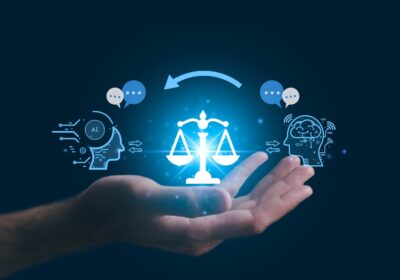2025 Workplace: Top 7 Key Trends HR Leaders Need to Know

January 30, 2025
SEB Marketing Team
The workplace in 2025 is evolving at an unprecedented pace, driven by technological advancements, shifting employee expectations, and a global focus on wellbeing. HR leaders and talent acquisition specialists must stay ahead of these trends to build engaged, resilient, and high-performing teams. Let’s explore the most significant workplace trends shaping 2025 and provide actionable insights to help HR professionals adapt effectively.
- Mental Health Takes Center Stage
The importance of mental health has grown significantly in recent years, with employees demanding better support from their employers. In 2025, mental health has moved from being a peripheral concern to a central focus in the workplace. Employees increasingly prioritize their mental wellbeing, expecting robust support from their employers. Forward-thinking organizations are integrating mental health resources into their culture, understanding that mental health directly impacts productivity, job satisfaction and overall employee engagement.
Key strategies include providing access to counseling services, offering mental health days, and training managers to recognize signs of burnout. Creating an environment where employees feel safe discussing mental health is essential for building a supportive and thriving workforce.
2. AI and Automation Redefine Work
Artificial intelligence (AI) and automation are revolutionizing the workplace, streamlining repetitive tasks, enhancing decision-making, and enabling personalized employee experiences. However, these advancements also bring challenges, particularly regarding workforce displacement and the growing need for technical skills.
To address this, HR leaders cand conduct skills audits to identify gaps and implement upskilling programs for their workforce. Leveraging AI-powered tools, such as chatbots, can also improve HR processes by providing instant support for employee queries and streamlining administrative tasks. A proactive approach to the continued integration of AI invites a culture of continuous learning, development, and can enhance both operational efficiency and employee satisfaction.
3. Closing the Skills Gap
The rapid pace of technological and industry changes has widened the skills gap, making it harder for organizations to find qualified talent. Skills relating to AI, Machine Learning, Cybersecurity, and Data Visualization are becoming increasingly sought after to make their business process streamlined and cost-effective. As the workforce evolves, HR leaders can address this demand for new skills by adopting creative solutions to develop their workforce and bridge this gap.
Strategies include implementing robust training and development programs, encouraging continuous learning, and providing opportunities for employees to upskill and reskill. By focusing on skill development, organizations can ensure that their workforce remains competitive and adaptable to future challenges.
4. The Rise of the Workcation
Remote work is here to stay. Flexibility continues to shape the workplace, with the rise of the “workcation” blending work and leisure. Employees are embracing the ability to maintain productivity while working from destinations of their choice.
To support this trend, HR leaders must establish guidelines to ensure work-life balance during workcations, provide collaboration tools for seamless remote work, and monitor productivity to measure the impact of these arrangements. While workcations offer employees a refreshing change of pace, clear policies are necessary to maintain equilibrium between work and personal time.
5. Leveraging Virtual Reality (VR) and Gamification
Innovative technologies like VR and gamification are transforming how employees engage with work. VR is increasingly being used for immersive onboarding and training, while gamification introduces game-like elements into tasks to boost motivation and collaboration.
HR leaders can explore opportunities to pilot VR experiences for team-building activities and onboarding programs. Similarly, incorporating gamification into training and performance management can make these processes more interactive and enjoyable, leading to improved employee retention and satisfaction.
6. Employee Wellbeing Goes Beyond Basics
A holistic approach to wellbeing is gaining traction in 2025. Employees now seek support across mental, emotional, physical, and financial dimensions. While traditional benefits like gym memberships remain important, expanding offerings to include financial literacy courses, stress management workshops, and personalized wellness incentives can make a significant difference.
Flexible work schedules and initiatives that promote social connections also contribute to enhancing employee wellbeing. By addressing these diverse needs, HR leaders can cultivate a workplace culture that prioritizes the whole person.
7. The Role of AI in HR Support
AI-powered tools are becoming indispensable in HR operations, automating routine tasks such as leave management, policy inquiries, and benefits administration. By integrating AI, HR professionals can free up time for strategic initiatives and provide employees with faster, more efficient support.
Regularly updating AI systems to ensure accuracy and maintaining a balance between automated and human oversight are essential for delivering personalized experiences. This blend of technology and human touch can significantly enhance employee satisfaction.
The workplace in 2025 demands innovation, adaptability, and a proactive mindset from HR leaders. Staying ahead of these trends will drive employee engagement and productivity and drive long-term organizational resilience and competitiveness. By focusing on mental health, embracing technology, addressing the skills gap, and fostering flexibility, organizations can position themselves for success in the evolving world of work.
Post navigation
Related Posts

3 Keys to Sustainable Excellence of High-Performance Teams
You spent a considerable amount of capital and time hiring the best engineers, the most…

Your 5-Point Generative AI Policy Checklist for HR and Tech Leaders.
It’s official: Generative AI (GenAI) is no longer a futuristic concept—it’s a powerful productivity co-pilot…

The Psychological Safety Re-Check: Why Even Top Teams Need a Periodic Vulnerability Audit
You’ve built a rockstar team. They hit their numbers and they crush their goals. Congratulations!…
